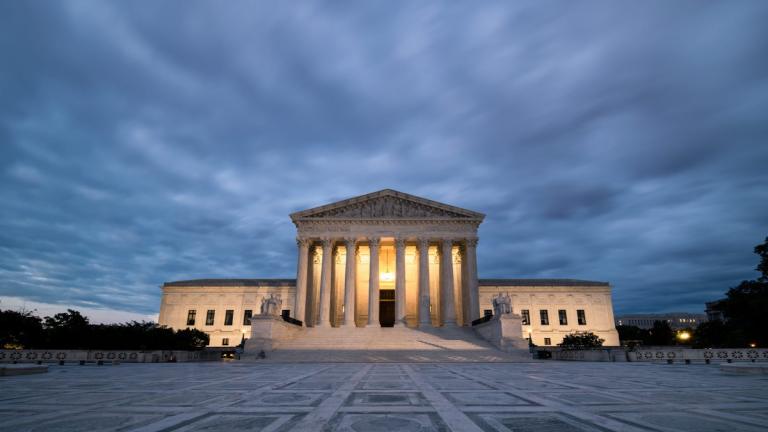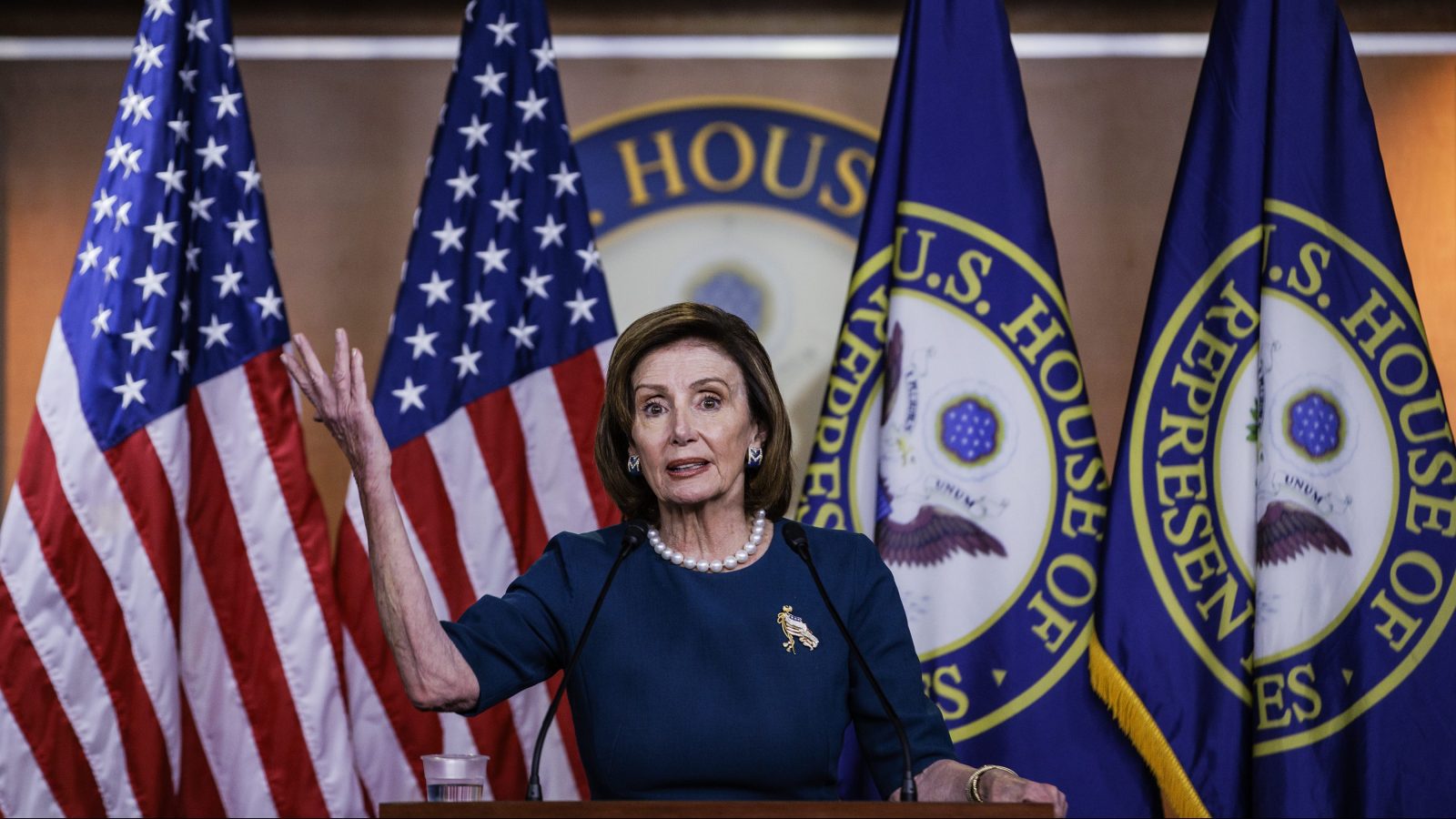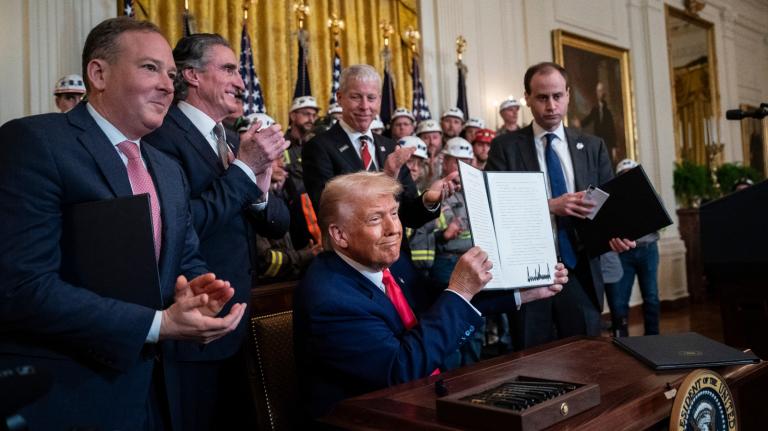On Friday, the U.S. House of Representatives passed a $1.2 trillion infrastructure bill. After President Joe Biden signs it, which he’s expected to do shortly, it will inject $550 billion in new spending over the course of five years into America’s roads, bridges, tunnels, airports, and other physical infrastructure badly in need of an update.
The bill was helmed by Democrats in both chambers, but 19 Republican senators and 13 Republican representatives voted for it — a testament to the fact that infrastructure is widely recognized as a critical priority by both major political parties in the U.S. “This legislation will mean that our majority will have delivered a major victory for the American people in a bipartisan way,” House Majority Leader Steny Hoyer said in an address to the House.
Climate change, on the other hand, is still squarely in Democrats’ wheelhouse. That’s why this infrastructure bill, which Biden initially envisioned largely as a climate package, pretty much exclusively focuses on what Republicans like to call “traditional” infrastructure — bridges, tunnels, roads, and the like.
The rest of Biden’s climate agenda — half a trillion dollars in funding to address the causes and impacts of climate change — is in a “human infrastructure” bill called the Build Back Better Act. That bill is now on hold, following weeks of disagreement between moderates and progressives in both the House and Senate over how much the bill should cost and what, precisely, should go in it. On Friday, five Democratic moderates in the House released a statement committing to pass the Build Back Better Act as soon as the Congressional Budget Office releases an assessment of its costs.
Until the Build Back Better Act passes both houses of Congress — if it passes at all — the only semblance of federal climate policy isn’t so much a policy per se as a jumble of green spending buried in the infrastructure bill. Here’s a breakdown.
A portion of the climate spending in the bill falls under the category of “climate resilience,” measures that don’t necessarily bring down emissions, but will provide people and infrastructure with some measure of protection from the effects of climate change (i.e. extreme weather). The Army Corps of Engineers, the government’s Bob the Builder, will get $11.6 billion for projects related to flood control. The Federal Emergency Management Administration will get another $3.5 billion for flood mitigation and assistance. The National Oceanic and Atmospheric Administration will get $140 million for forecasting climate change and roughly half a billion additional dollars to better map and forecast inland and coastal flooding, specifically. More than $100 million will go to the Bureau of Indian Affairs for relocating Indigenous communities away from climate risks like sea-level rise.
Other measures will result in fewer emissions. Aging power grids across the U.S. will get $65 billion for upgrades — thousands of miles of new transmission lines and technologies to make grids smarter and more efficient. The Energy Department’s Weatherization Assistance Program will get $3.5 billion to help more low-income households become more energy efficient. The bill invests $39 billion in modernizing public transit and $66 billion in doing the same for passenger and freight rail. Traveling via public transit and rail is more fuel efficient, and therefore more environmentally friendly, than traveling by car or plane. However, critics note that $39 billion will only put a dent in the $176 billion transit investment backlog in the U.S.
The bill also contains $5 billion to get started on a national network of electric vehicle chargers, and another $2.5 billion that can be put toward any kind of “alternative fueling infrastructure,” including natural gas, hydrogen, and propane. The bill also allocates $5 billion to replace old, polluting school buses with lower-carbon options, with half the money designated for electric school buses.
There are a few major provisions in the bill for researching and developing new carbon-cutting technologies, though not all climate advocates agree that these measures are a step in the right direction. For example, the bill includes more than $8.5 billion to start building the machinery, pipelines, and other infrastructure necessary to capture carbon dioxide emissions, both from industrial plants and directly from the air, and bury them underground. Many environmental groups disapprove of these solutions, claiming they do little more than prop up the fossil fuel industry. But proponents, including the world’s leading body of climate researchers, the Intergovernmental Panel on Climate Change, say it could be impossible to achieve net-zero emissions without them. The same goes for scaling up the production and use of clean hydrogen fuel. The bill allocates $8 billion to create four “clean hydrogen hubs” that will test out its use in new applications.
Some of the spending is dedicated to remediating old oil and gas infrastructure. With $4.7 billion set aside for cleaning up orphaned wells, the bill tries to make a dent in the backlog of wells that have been abandoned by oil and gas operators. When companies go under, the wells they were operating become the state, federal, or tribal government’s responsibility. These wells belch methane — a potent climate-warming gas — into the air, leak pollutants into the groundwater, and can be a safety hazard for animals and people alike. The Environmental Protection Agency estimates there are 2.1 million unplugged orphaned wells nationwide, and recent reporting by Grist and the Texas Observer indicate thousands more are likely to join the roster in the coming years.
The infrastructure bill sets aside a maximum of $25 million per state for cleaning them up. The bill also requires the Bureau of Land Management to set up a program to plug wells on federal lands. The plan received bipartisan support because it’s seen as both a jobs program for oil and gas workers and funding for environmental remediation. But some environmental and good government groups have raised concerns that it foists clean-up costs — which the oil and gas industry is responsible for — onto taxpayers and creates a moral hazard. Robert Schuwerk, executive director of Carbon Tracker’s North America office, warned of the “unintended consequences of the bill,” including perhaps incentivizing operators to abandon wells instead of fulfilling their environmental obligations. “What’s the message to operators who were considering plugging wells on their own dime?” he asked.
The majority of the funding in the bill goes toward the aforementioned “traditional” infrastructure: $110 billion for roads, bridges, and major infrastructure projects; $11 billion for transportation safety; $55 billion to upgrade aging water infrastructure and replace lead service lines and pipes; $25 billion to fixing America’s airports. Investing in new highways further encourages people to drive cars instead of taking public transit. And at least one of the bill’s offerings — $18 billion in loan guarantees for a $38 billion liquified natural gas export terminal in Alaska — moves the needle in exactly the wrong direction.
It’s worth remembering that the green spending in this bill was much higher before a bipartisan group of senators negotiated it from its original, $2 trillion size to a punier $1 trillion version. Total funding for electric vehicles was slashed 90 percent, funding for clean energy tax credits cut out entirely, the list goes on.
Patrick Gaspard, the president and CEO of the Center for American Progress, a liberal think tank, praised the passage of the infrastructure bill while calling on Congress to pass the Build Back Better Act. “While today we take a significant step forward, no thriving 21st-century economy can sustain the social and economic injustices and inefficiencies of centuries past, nor can they look the other way in the face of fundamental threats like climate change,” Gaspard said in a statement. “The only way for Congress to redress these wrongs is to send both of these bills to the president’s desk.”




